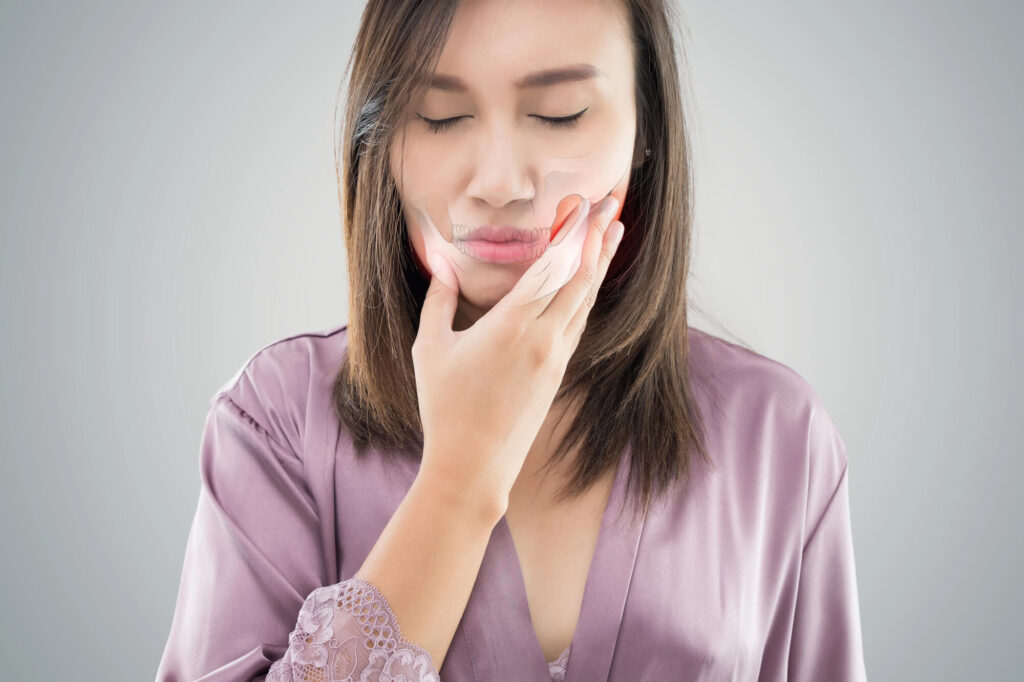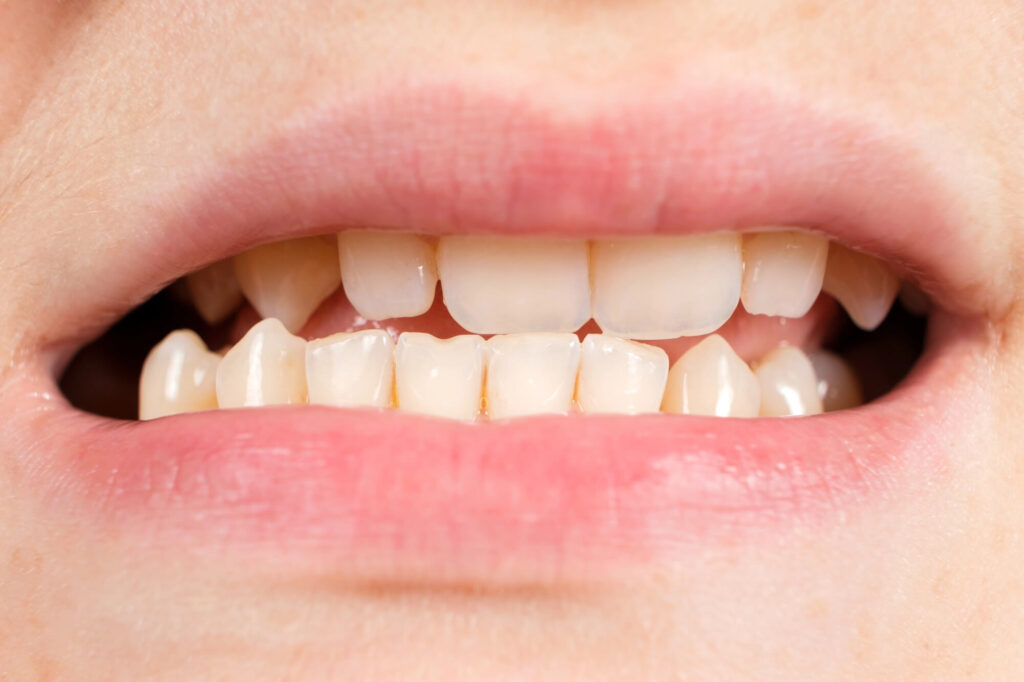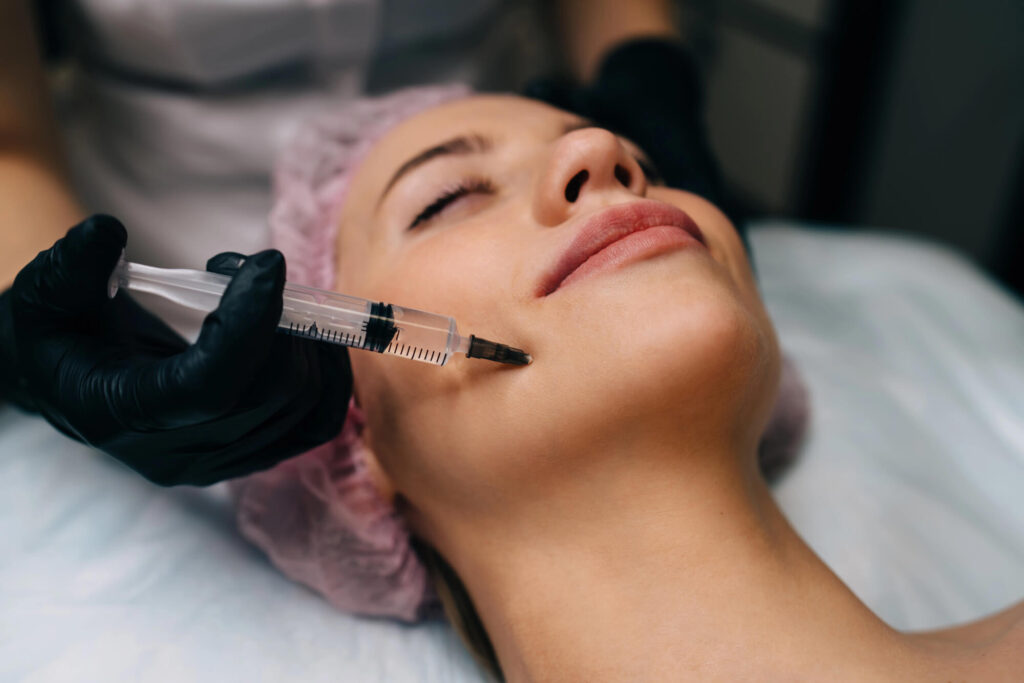Temporomandibular joint dysfunctions are intricate and complex disorders to treat. Due to the complexity of the jawbone joint and the wide variety of factors that can cause TMD, doctors often struggle to diagnose and treat this condition properly. This often leaves patients to suffer for longer. Fortunately, for these individuals, dental Botox® may be the unsung hero.
Besides helping people keep their youthful appearance longer, Botox® relaxes the jaw muscles, allowing patients with TMD to reduce discomfort and regain the ability to open their mouth fully, eat, and speak easily. However, not everyone is a candidate for this treatment, and here’s why.

What’s Temporomandibular Joint Dysfunction?
Temporomandibular joint dysfunction, or TMD, is a disorder that affects the jaw joint and the muscles that control it. This joint at the base of the skull is a very complex part of our body because it permits side-to-side and up-and-down movement.
For this reason, diagnosing and treating TMD can be difficult.
TMJ disorders can cause varying amounts of discomfort. Persistent jaw pain and limited jaw movement are typical symptoms. The discomfort is not always consistent: most cases of TMJ disorders resolve themselves within a short period, usually within a couple of months. However, they tend to reappear over time.
Sadly, TMD is a highly common condition. Approximately 12 percent of Americans suffer from TMJ disorders at some point in their lives. With nine women for every one man experiencing excruciating pain and limited jaw movement, women are impacted more frequently than men.
What Benefits Does Botox® Have for TMD?
Overexertion and tension in your TMJ can result in headaches, jaw pain, and other undesirable symptoms. Numerous treatment options try to ease patients’ discomfort by encouraging relaxation or promoting orthodontic therapies to realign the bite and improve the patient’s resting position. But these approaches are not always effective.
However, TMD symptoms can still be excruciating and seriously incapacitating for some people. Imagine being unable to speak, eat, or even smile without experiencing pain whenever you opened your mouth. In these severe situations, Botox® is frequently advised.
Unknown to some, Botox® is actually a toxin that prevents a muscle from moving for a limited time. When injected into the jawbone, it can help paralyze some muscles, relax the area, and reduce pain and other symptoms. According to a 2017 study, Botox injections may actually lessen TMD symptoms like:
- Pain
- Jaw click
- Hypermobility and hyperactivity
- Limited jaw mobility
Who’s a Good Candidate for Botox® for TMD?
More and more patients with TMJ disorders are turning to Botox® as a solution for their pain. This toxin has proven effective when other traditional treatments failed to relieve tension.
However, Botox® isn’t considered a first-line treatment: it’s a promising second-line option, especially when symptoms are muscle-driven rather than joint-based. Ideal candidates are people who:
- Have Muscle Tension or Chronic Jaw Pain: This is especially true for people with myofascial pain in their neck, jaw, or temples that does not go away despite using oral appliances or physical therapy.
- Have Severe Bruxism (Teeth Grinding/Clenching): Botox® can help lessen the overactivity of the masseter muscles when nightguards or stress management have failed.
- Have Limited Jaw Movement: Individuals who suffer from painful chewing, restricted opening, or jaw locking as a result of hyperactive muscles.
- Have Headaches & Migraines Linked to TMD: Botox® may help with tension-type headaches or migraines brought on by strained muscles associated with TMD.
- Seek a Non-Surgical Option: People seeking a minimally invasive procedure that does not involve taking medicine or oral appliances for an extended period of time.

Who Should Avoid Botox® for TMD?
While Botox® can offer relief to many people struggling with TMD, certain patients are advised to avoid it. This is the case for:
- Pregnant or breastfeeding individuals
- People with neuromuscular disorders
- Those allergic to botulinum toxin or its ingredients
- Individuals with unrealistic expectations that consider Botox to be a permanent cure
Is Botox® for TMD Safe?
Yes, Botox® is a safe and reliable method for reducing TMD symptoms when applied by a qualified professional.
According to research on animals, Botox® injections may weaken bones, but a 2020 study on humans disputes this. People who are thinking about getting Botox® for TMJ dysfunction should talk to a healthcare provider about the advantages and disadvantages in detail.
Additionally, it is fundamental to reach out to a qualified professional. Botox® for TMD requires in-depth anatomical knowledge, and poor technique can lead to complications.
Injecting the wrong muscles can worsen pain, cause jaw weakness or asymmetry, and even lead to difficulty chewing or speaking. Poor technique or non-sterile tools can lead to infections, inflammation, or hematoma formation. Additionally, if Botox® affects nearby muscles like the sternocleidomastoid or pharyngeal muscles, it can impair swallowing or even airway function.
To prevent all of this, make sure to seek a trained professional that has former success stories to display.
How Long Does Botox® for TMD Last?
Sadly, Botox® is not a cure for TMJ issues. It is a temporary treatment that wears off over time. A person must repeat the treatment every few months to maintain the effects.
The effects of Botox® for treating temporomandibular disorders (TMD) typically last 3 to 6 months. Relief may begin within a few days to two weeks after injection, and effectiveness peaks around 4 to 6 weeks post-injection. By week 12, though, the effects will gradually taper off.
The total durability of Botox® depends on various factors, such as the severity of TMD and muscle activity. Patients who use their jaw muscles more intensely, due to bruxism, for example, tend to metabolize the Botox® faster.

Explore the Benefits of Dental Botox® for You
TMJ disorders are more than an oral issue: they can become a severely disabling condition that doesn’t let you conduct your daily activities with ease. Certain traditional methods like doing jaw exercises or using a mouthguard at night can help ease some symptoms. However, they may not be the solution for more severe cases.
Luckily, Botox® offers a reliable, proven method patients can rely on to reduce pain. If you suffer from TMD and want to learn more about this solution, contact CJ Dental today!




